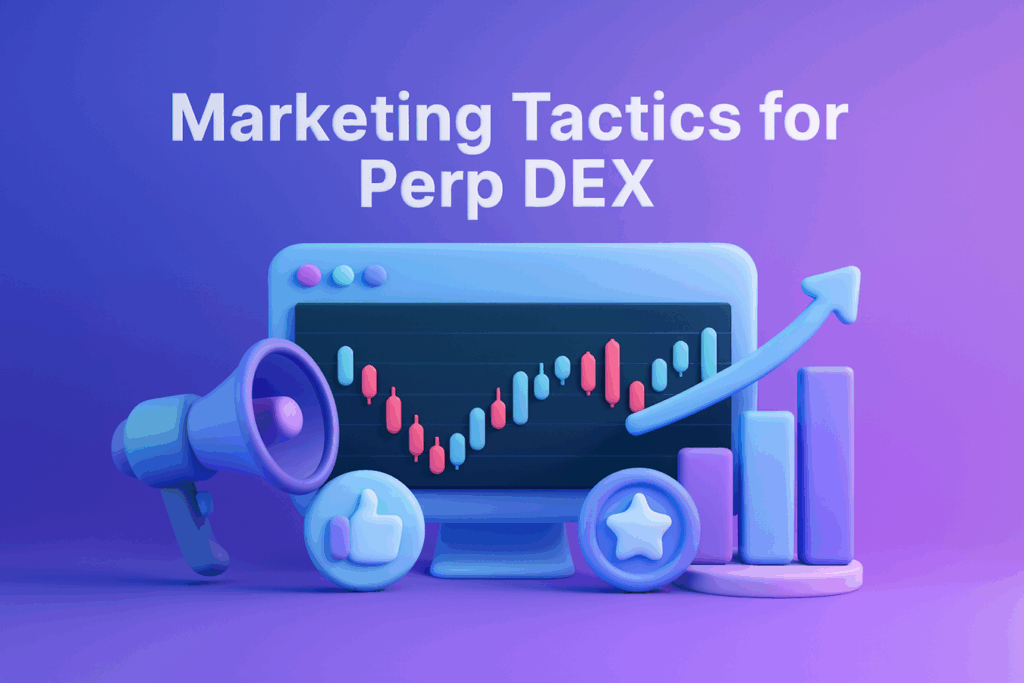Introduction: Growth Without Million-Dollar Budgets
Product launched, first users onboarded, but metrics aren’t growing. To attract the next funding round, you need to demonstrate traction, while your aggressive marketing budget may already be exhausted. Traditional advertising is either banned for crypto projects or prohibitively expensive.
The good news: the best DeFi projects grow not through advertising budgets, but through smart community engagement mechanics. Systems thinking and understanding of crypto-economics are exactly the superpowers needed for growth hacking in decentralized finance.
This guide contains 6 proven strategies that work in 2025. All hacks are selected based on three criteria: actually work (have success cases), budget-friendly (under $5000/month), suitable for post-launch stage (when you have a product but need users).
The Foundation: Understanding Why Users Leave DeFi
Before diving into growth hacks, watch this critical analysis of user behavior that makes these strategies so effective.
Why this matters for growth hacking: Understanding the 89% user abandonment rate and core UX barriers is crucial for crafting authentic growth strategies that actually retain users, not just attract them.
Key insight: The most successful DeFi growth comes from solving real user problems, not just increasing visibility.
Hack #1: Points System Instead of Traditional Airdrops
What’s the core idea?
Forget about “do a swap and get tokens” airdrops. That’s expensive and attracts sybils who immediately dump tokens and crash the price. A points system is gamification without commitments. Users earn points for useful actions, but not tokens. This creates FOMO and hints at future rewards, growing a loyal audience without diluting tokenomics.
Who is this best for?
Absolutely all types of DeFi projects: lending protocols, L2 solutions, restaking protocols, DEXs. Especially effective at the pre-token stage.
How to implement it?
- Choose your airdrop model:
- Points system (EigenLayer): Continuous point accumulation for activity
- Retroactive (Uniswap): Rewards for past actions without prior announcements
- Incentivized testnet (Berachain): Points for testing before mainnet launch
- Liquidity-based (Blast): Points proportional to TVL and holding duration
- Define key actions: TVL, trading volume, or user count? Choose 3-5 target actions.
- Create scoring formula: Example: 1 point per $1 TVL per hour + 100 points per swap >$100 + 500 points per referral.
- Implement multi-layer Sybil protection:
- Level 1 (free): On-chain analysis — filter wallets with identical transaction patterns
- Level 2: Integration with Gitcoin Passport (minimum “humanity score” >15)
- Filters: Wallet age >30 days, protocol diversity, natural transaction volumes
- Build a leaderboard: Simple page with wallet connection showing points balance and ranking.
- Add multipliers: “2x points for holding liquidity >30 days” or “+10% for owning early NFT”.
Team and Resources
- Who you need: 1 Backend developer (40-60 hours one-time work) + 1 Frontend developer (for leaderboard, 20-30 hours).
- What you’ll need: Script for tracking on-chain actions, database for points, integration with Sybil filters.
Timeline and Budget
- Launch: 3-4 weeks for development and testing.
- Maintenance: Ongoing work with minimal involvement (5 hours/week monitoring).
- Budget: $500-1500/month (80% hosting and tools, 20% developer time).
Real-world Example
EigenLayer became the king of this approach. Their points system for ETH restaking attracted $15+ billion TVL before token launch. Users spent months “farming” points, increasing protocol metrics purely on expectation of future rewards. Key to success — simple mechanics (more staking = more points) plus robust Sybil protection.
Hack #2: Gamified Ambassador Program on Zealy/Galxe
What’s the core idea?
This is the evolution of ambassador programs. Instead of simple “token distribution for activity,” you create game mechanics: participants complete quests of varying difficulty, earn XP, compete on leaderboards for exclusive rewards. They become micro-influencers who organically promote the project for achievements and status.
Who is this best for?
Any DeFi projects with active communities, especially DEXs, yield farming protocols, L1/L2 blockchains. Ideal for pre-launch or early growth stages.
How to implement it?
- Choose a platform: Zealy.io (Web2 audience), Galxe (Web3 natives), QuestN (customization), or Layer3 (educational approach).
- Create quest hierarchy:
- Level 1 (Social): Subscriptions, likes, reposts, Discord
- Level 2 (Engagement): Posts about project, memes, AMA participation
- Level 3 (Product): Testnet testing, feedback, guide writing
- Set up reward system:
- Weekly: Top-10 participants get $50-200 in tokens
- Milestone rewards: For reaching XP — exclusive NFTs or roles
- Seasonal campaigns: Limited-time contests with major prizes
Team and Resources
- Who you need: 1 Community Manager (15-20 hours/week) for creating quests, moderation, and participant communication.
- What you’ll need: Platform account ($0-200/month), tokens for prize pool, Discord for communication.
Timeline and Budget
- Launch: 1-2 weeks for platform setup and first quests.
- Maintenance: Ongoing work with weekly content updates.
- Budget: $800-2500/month (70% prizes, 20% CM salary, 10% tools).
Real-world Example
Verida Network ran a successful campaign on Galxe and Zealy over the past year, attracting 20,000+ participants. The project distributed 2.2 million VDA tokens among users with >1,485 points in Zealy. Key to success — multi-level bonus system: participants active on both platforms received additional reward multipliers.
Hack #3: Micro-Influencer Strategy with Authenticity Focus
What’s the core idea?
Instead of expensive collaborations with major crypto influencers, you work with 15-20 micro-influencers (1K-50K followers) who genuinely care about DeFi. They have 2-3x higher engagement rates than mega-influencers, their audiences trust recommendations more, and costs are 5-10x lower.
Who is this best for?
All types of DeFi projects, especially those requiring explanation of complex concepts. Ideal for new protocols that need to educate the market.
How to implement it?
- Find the right micro-influencers: Search through hashtags #DeFi, #Web3, #CryptoEducation on Twitter, Instagram, YouTube. Study crypto podcast participants, educational content creators.
- Check audience quality: Engagement rate >3%, comment quality, follower geography, post history.
- Create attractive offers:
- For beginners: Educational materials + $50-200
- For experienced: Early access to features + revenue share from attracted users
- For all: Opportunity to join advisory board
- Develop content plan: Give creative freedom but provide quality materials: one-pagers, demo videos, FAQs.
- Measure effectiveness: Track not just reach and engagement, but click-through rates, sign-ups, actual usage. Use UTM tags and promo codes.
Team and Resources
- Who you need: 1 Influencer Relations Manager (8-12 hours/week, can combine with marketing).
- What you’ll need: Search tools (Social Blade, HypeAuditor free plans), content kits, tracking system (UTM + Google Analytics).
Timeline and Budget
- Launch: 2-3 weeks to find first group of influencers.
- Maintenance: Ongoing work with partner rotation every 2-3 months.
- Budget: $800-2000/month (60% influencer payments, 40% content and tools).
Real-world Example
Lido Finance successfully used micro-influencer strategy for liquid staking promotion over the past year. They found 25 micro-influencers actively staking ETH. Each received $100-300 + 0.1% commission from attracted stakers. Result: average engagement rate 5.2% vs industry 1.6%, user conversion 340% higher than major influencers.
Hack #4: SEO-First Content Strategy on Medium and LinkedIn
What’s the core idea?
After recent Google updates, Medium and LinkedIn receive maximum visibility in search results. By publishing educational content on these platforms, you get double benefits: high Google rankings + direct access to platform target audiences. This is an organic way to become a thought leader with minimal costs.
Who is this best for?
All DeFi projects, especially complex protocols requiring mechanism explanations. Great for B2B projects (infrastructure solutions, dev tools) and for attracting partners/investors.
How to implement it?
- Research keywords: Google Keyword Planner, Ubersuggest for long-tail queries like “how to use decentralized exchanges”, “DeFi yield farming guide 2025”.
- Create content calendar: 2-3 articles/week on Medium + 1-2 posts/week on LinkedIn. Ratio: 70% educational content, 20% thought leadership, 10% about project.
- Optimize for SEO:
- Medium: Popular tags (#DeFi, #Blockchain, #Web3), 1500-2500 words, visuals and diagrams
- LinkedIn: Native posts + LinkedIn Articles, industry hashtags, active commenting in industry
- Create content series: “DeFi 101”, “Weekly Protocol Analysis”, “Security Deep Dives” — series build subscribers.
- Cross-promotion: Article announcements on Twitter, Telegram, Discord. Short summaries for social media.
Team and Resources
- Who you need: 1 Content Creator/Technical Writer (can be founder, 8-12 hours/week).
- What you’ll need: Canva for visuals (free plan), Grammarly for editing, Google Analytics for tracking.
Timeline and Budget
- Launch: 1 week for account setup and first articles.
- Maintenance: Ongoing work, results visible in 6-8 weeks.
- Budget: $200-600/month (85% team time, 15% tools).
Real-world Example
Aave regularly publishes technical deep-dives on Medium, consistently ranking in Google’s top results for “DeFi lending” queries. Over the past year, their educational articles led to significant protocol TVL increases. Secret: they create educational content for the entire DeFi ecosystem, not just promoting their product.
Hack #5: Farcaster Dominance Through Utility
What’s the core idea?
Twitter is oversaturated, breaking through is expensive. Farcaster is a “blue ocean” with quality Web3-native audience. Farcaster Frames are revolutionary: interactive mini-apps right in the feed without site redirects. You become a valuable participant through useful channels, insights, tools (bots, frames).
Who is this best for?
All projects, but especially those targeting advanced Web3 audiences and developers. Ideal for infrastructure projects.
How to implement it?
- Start with Farcaster: Create account, study platform, join relevant channels.
- Create thematic channel: Not about your project, but your expertise area (/onchain-analytics, /mev-strategies, /defi-security).
- Use Farcaster Frames: Create interactive elements:
- Yield calculator for your protocol
- Simple NFT minter with utility
- Polls for product discovery
- Swap frame for your DEX
- Be human: Personally manage account (founder or key team member), answer questions, participate in discussions.
- Integrate: “Get special NFT if you have Farcaster and used our protocol”.
Team and Resources
- Who you need: Founder or key team member (6-10 hours/week) + possibly 1 developer for complex frames.
- What you’ll need: Farcaster account, willingness to communicate, basic development skills for frames.
Timeline and Budget
- Launch: 1-2 days for setup, 1 week for first Frame.
- Maintenance: Constant activity to build reputation.
- Budget: $0-300/month (mainly team time, possible frame hosting costs).
Real-world Example
Paragraph (Web3 newsletter platform) grew through founder activity on Farcaster. He didn’t directly advertise the product but became a useful platform participant, creating educational content about Web3 media, which organically attracted huge attention to the project. His posts regularly get hundreds of likes and comments.
Hack #6: Build in Public — Your Code as Marketing
What’s the core idea?
In a world of fear about losing funds, transparency is the main weapon. Build in Public isn’t just blog posts, but a strategic framework for turning development into a trust campaign. You don’t show finished product, but involve audience in creation, making them co-participants. You start forming community before writing main code.
Who is this best for?
Ideal for pre-launch stage, but works at any stage. Especially powerful for infrastructure projects and complex protocols where trust is critical.
How to implement it?
- Public roadmap: Share vision and key stages, show long-term strategy with concrete milestones.
- Real-time metrics: Share TVL, trading volume, active users — show you have nothing to hide.
- Development process: Screenshots of early designs, tech compromises, code fragments for community feedback.
- Wins and losses: Talk about bugs, failed experiments, lessons learned — this builds incredible trust.
- Open governance: Publish all proposals, discussions, and voting results.
Team and Resources
- Who you need: Founder (personally, 5-8 hours/week) + possibly 1 content manager for systematization.
- What you’ll need: Twitter/X, Discord/Telegram, blog on Medium/Mirror, system for publishing metrics.
Timeline and Budget
- Launch: Can start today with first vision posts.
- Maintenance: Constant activity, but organically integrated into development process.
- Budget: $0-500/month (content manager optional).
Real-world Example
Yearn Finance intuitively embodied this strategy. Andre Cronje’s work was a public experiment: fair YFI launch without premine, open debates on every YIP on forums created user feeling of true protocol ownership. This became the foundation for explosive growth and cult status.
Conclusion: Growth Hack Synergy
These 6 hacks create a unified self-sustaining system. You start with smart airdrops with Sybil protection, build ambassador armies, attract through micro-influencers and SEO, dominate new platforms, broadcast development transparency.
Implementation Roadmap:
Month 1-2 (Foundation):
- Hack #1 (Points System) + Hack #6 (Build in Public)
Month 3-4 (Community Building):
- Hack #2 (Ambassadors) + Hack #4 (SEO Content)
Month 5-6 (Scale):
- Hack #3 (Micro-influencers) + Hack #5 (Farcaster)
Key Principles:
- Authenticity over hype — DeFi users distinguish utility from marketing noise
- Community-first — users should become main advocates
- Data-driven iterations — measure everything, double down on what works
- Long-term thinking — build mechanics for months, not weeks
Remember: all budgets are estimates. Your main investment is time and creativity. In DeFi, reputation equals everything. Better to spend more time on quality product and honest community than on quick hacks that might harm long-term prospects.
Good luck growing your DeFi unicorn!
Frequently Asked Questions (FAQ)
A points system creates “earned-but-not-yet-redeemable” FOMO, keeps sybil farmers at bay and avoids immediate token-dumping, so you grow a loyal user base without diluting supply.
After a 3-4-week build, ongoing costs run roughly $500–1,500 per month for hosting, tools and light dev maintenance.
Creators with 1 k-50 k followers deliver 2-3 × higher engagement and are 5-10 × cheaper, giving far better cost-per-conversion than mega-accounts.
Expect 1–2 weeks for set-up; plan on one community manager (≈ 15 h/week) plus $800–2,500 per month for prizes, platform fees and moderation.
With consistent weekly publishing, organic clicks typically appear in 6–8 weeks, then compound as topical authority grows.
Yes—its Web3-native user base is still a “blue ocean,” Frames let you offer utility in-feed, and entry costs are minimal (often under $300 monthly).
Rate the article














